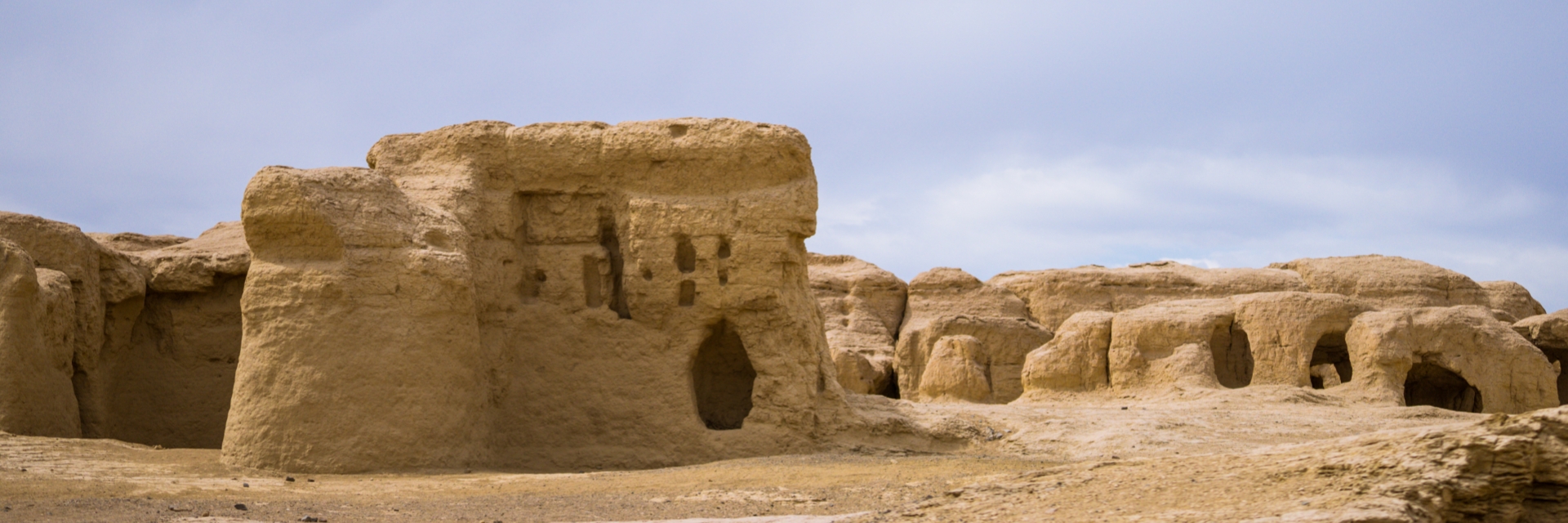
Jiaohe Ruins on Silk Road: Key Historical Site in Xinjiang
By Leo
Hi, I’m Leo. After more than 20 years exploring Xinjiang, visiting the Jiaohe Ruins on the Silk Road offered me a vivid glimpse into the golden age of this legendary trade route. Nestled in the Turpan Basin, the ruins reveal how East and West once connected. Walking through its ancient walls, I could almost feel the footsteps of traders, monks, and travelers from centuries past.
In this guide, I’ll share what I learned from my visits and provide practical tips to help you fully experience the history and culture of Jiaohe Ruins.
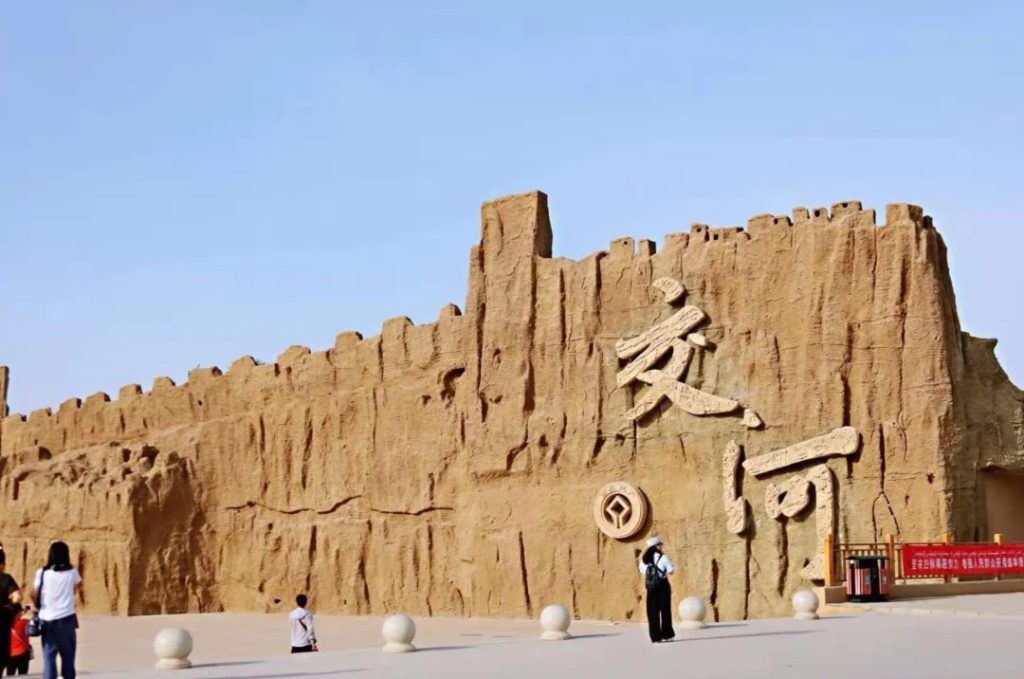
Core Must-See Attractions at Jiaohe Ruins on Silk Road
Jiaohe Ruins on Silk Road offers a rare glimpse into ancient life along the Silk Road. Located in Xinjiang, this historic site is a must-visit for anyone interested in Xinjiang travel and the rich cultural exchange that shaped the region.
1. Main Street & Residential Area: Step into Ancient Daily Life
The main street at Jiaohe Ruins on Silk Road is 10 meters wide, running north to south as in the Tang Dynasty. Remains include government offices, homes, and workshops. Residential areas show courtyards, cave houses, and underground grain storage, typical of Silk Road travel in Xinjiang.
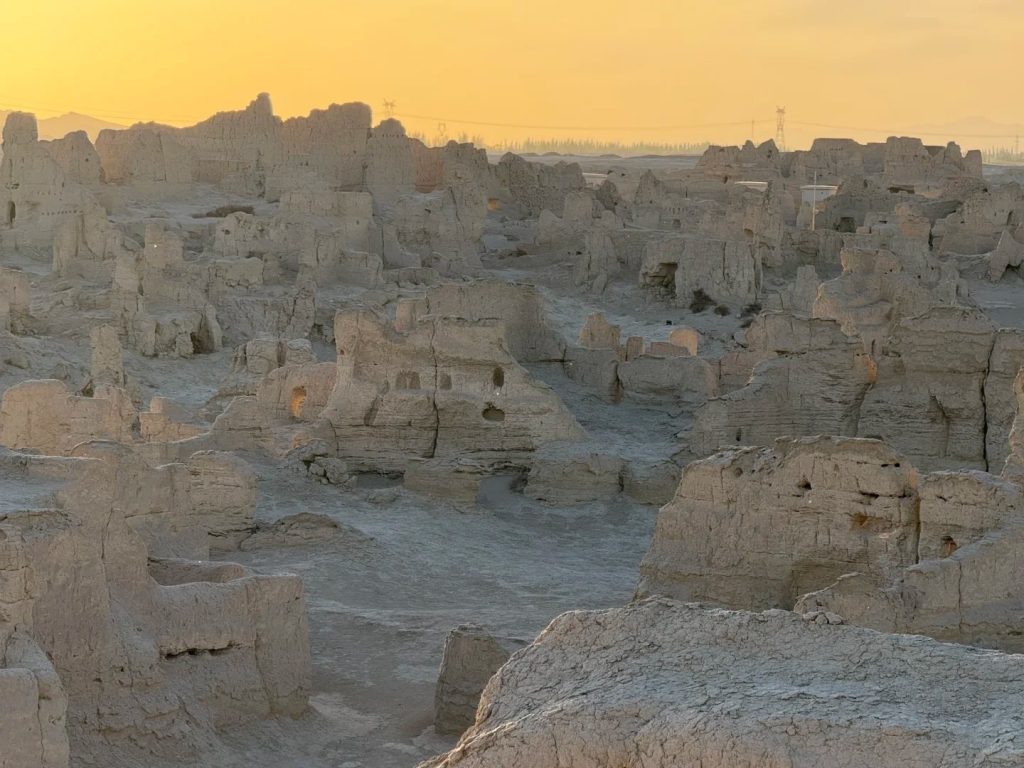
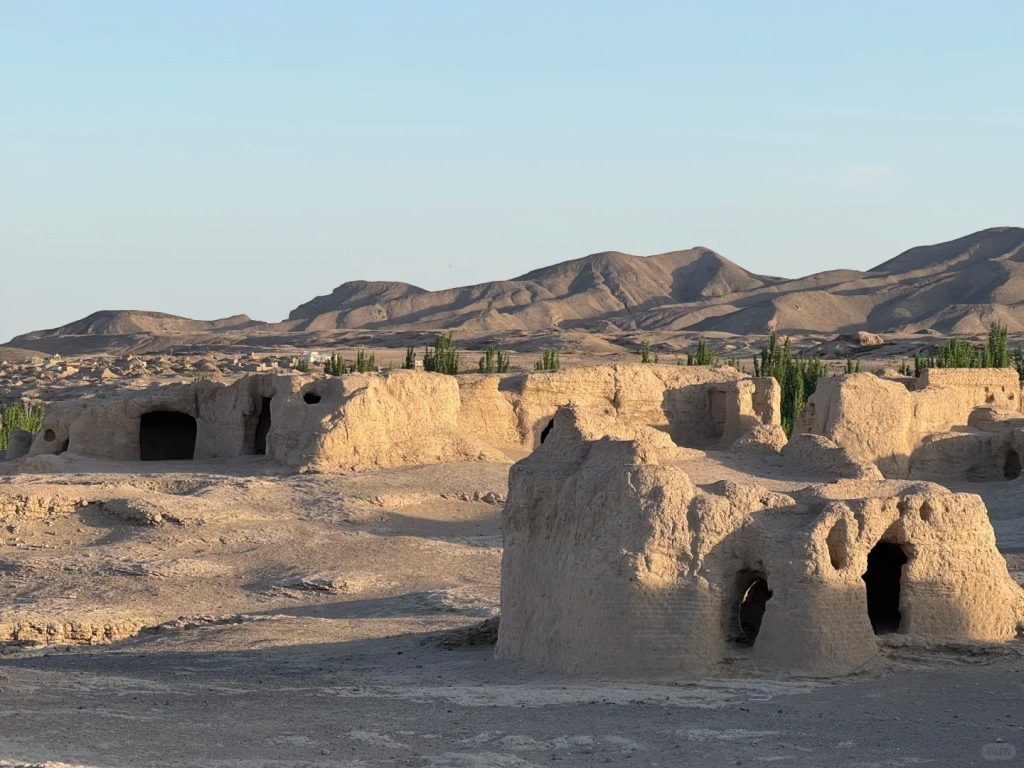
Houses face away from the street with entrances in alleys for defense. Dark floor marks reveal ancient fire pits used for cooking. This street shows daily life centuries ago at Jiaohe Ruins on Silk Road.
2. Temple Zone: Explore Religious Site in Jiaohe Ruins
The temple area at Jiaohe Ruins on Silk Road, Xinjiang, features tall stupas and grottoes. A 3-meter-high stupa base still shows lotus carvings. Legend says Tang monk Xuanzang preached here during his westward journey.

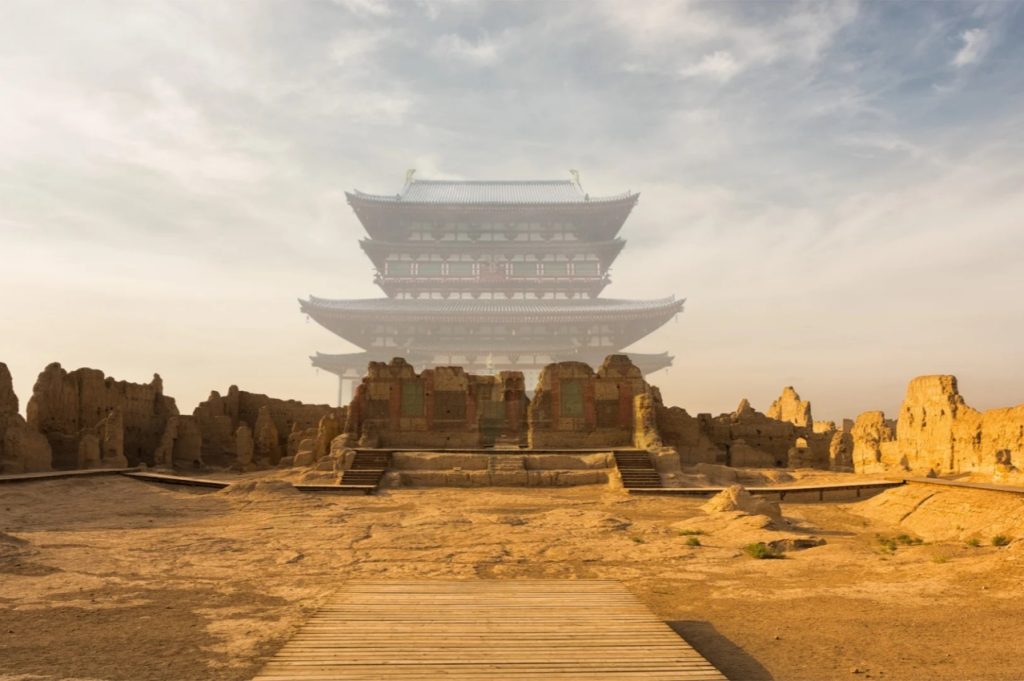
Next to the stupa, a small grotto holds faded murals blending Central Plains Buddhist art with Western Regions styles—a clear sign of Silk Road cultural exchange. The temple square’s “column holes” once held wooden pillars for large buildings.
3. Central Square: Imagine Silk Road Markets
The central square at Jiaohe Ruins on Silk Road, Xinjiang, is as large as a football field. Its smooth ground shows thousands of years of footsteps—proof of countless travelers and traders. This square was the hub for Silk Road trade and gatherings.
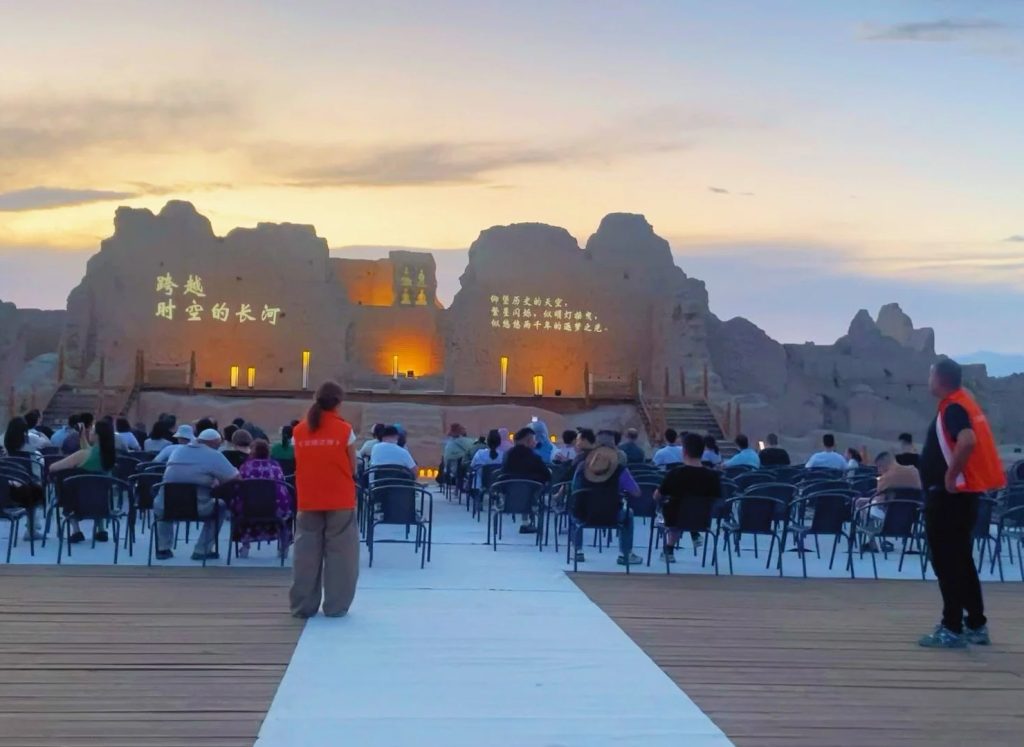
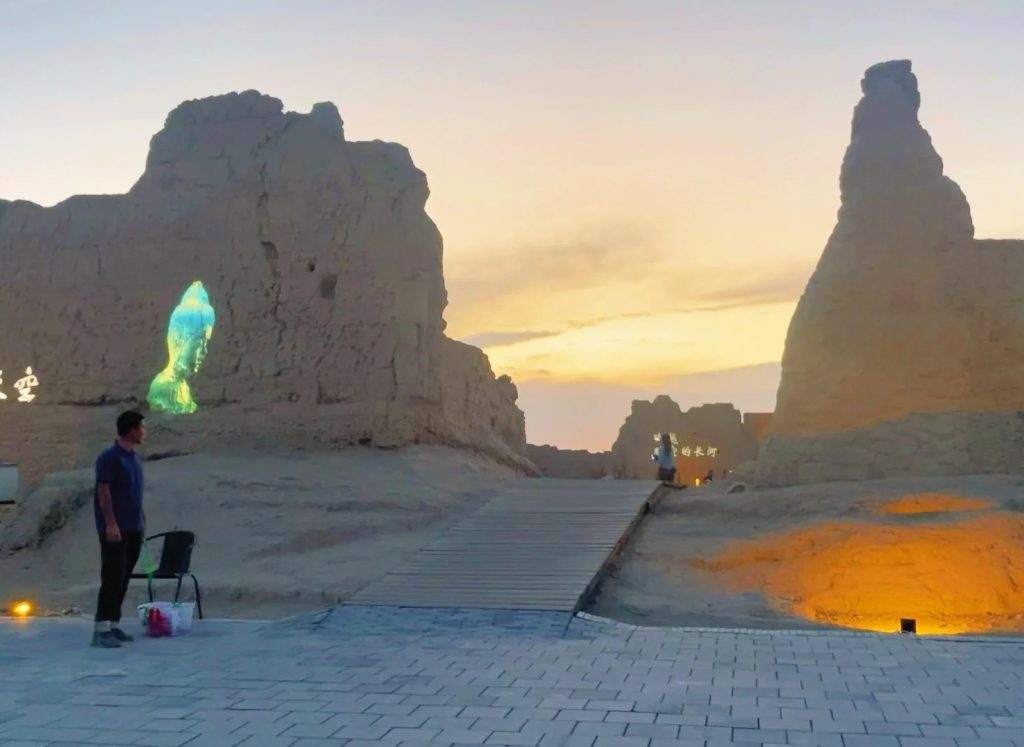
Standing here, you can almost hear camel bells from Persian caravans and merchants calling out, bringing the spirit of Silk Road travel at Jiaohe Ruins on Silk Road to life.
4. Ancient Well Sites: Discover Water Wisdom
Jiaohe Ruins on Silk Road in Xinjiang has over 300 ancient wells, some reaching 20 meters deep. These wells met water needs even during wars. Remarkably, they connect to rivers outside the city through underground channels, forming a complete Silk Road water system.
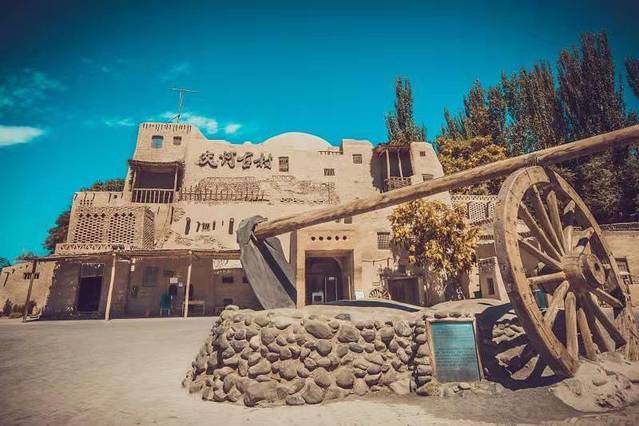
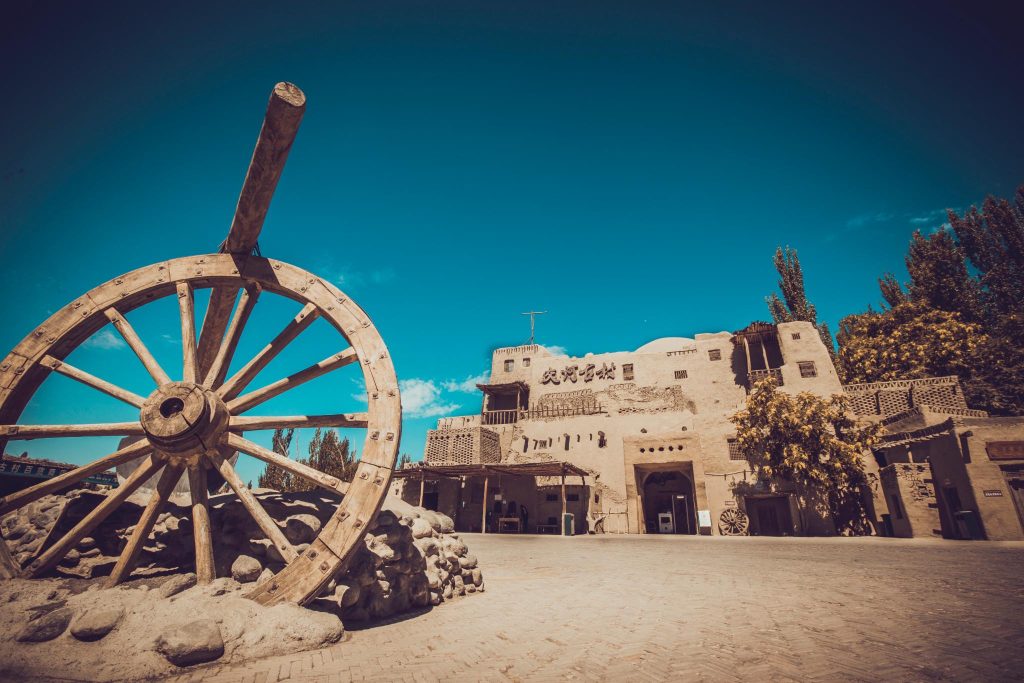
Some wells still hold water today. Rope marks on the walls tell stories of hard work and clever survival at Jiaohe Ruins on Silk Road.
5. Yarghul Grottoes: Art & Faith in Stone
The Yarghul Grottoes at Jiaohe Ruins on Silk Road, Xinjiang, hold precious Tang Dynasty Buddhist murals and Manichaean paintings. They reveal how religions blended along the Silk Road in the Western Regions. Only 2 grottoes are open now, so plan ahead.
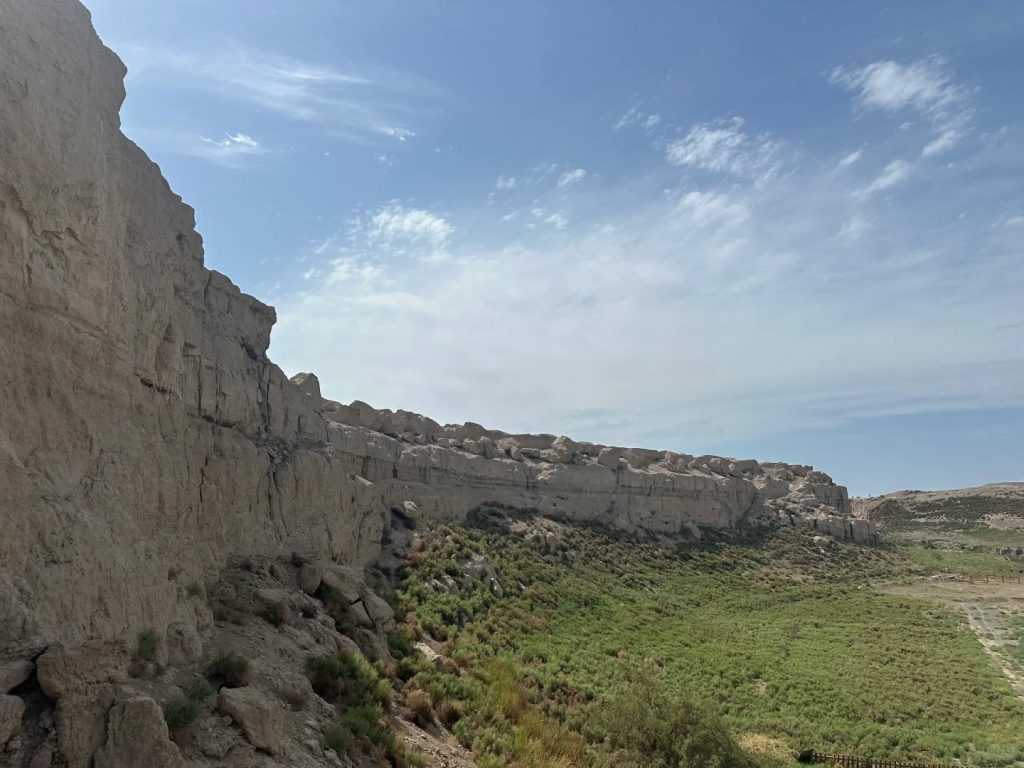

No photos are allowed inside. Following a guide brings the murals’ stories to life. Remember to book in advance through the “Yarghul Online” mini-program, as daily visitors are limited.
Local Food to Try: Jiaohe Ruins on Silk Road
Xinjiang’s rich culinary traditions make a visit to the Jiaohe Ruins on Silk Road even more memorable. From smoky lamb skewers to hearty pilaf and freshly baked naan, the local flavors reflect the region’s trading past and nomadic heritage. Here are some must-try dishes when exploring this historic site.
Lamb Skewers: Charcoal-grilled chunks of local lamb marinated with cumin, chili, and salt – the aroma alone evokes Silk Road caravans. Find them sizzling at street stalls near Jiaohe’s entrance or Turpan’s night markets. Pair with apricot juice to cut through the smokiness.
Lamb Pilaf: Fragrant rice simmered with tender lamb, caramelized carrots, onions, and raisins in lamb broth. This hearty dish fueled ancient traders and is commonly served at family-run eateries in Turpan’s old town or roadside restaurants along the Jiaohe access route.
Naan Bread: Xinjiang’s iconic flatbread, baked in clay ovens with sesame or onion seeds. Its sturdy texture made it a caravan staple. Look for fresh-baked versions at local bakeries near Turpan’s Karez Wells or vendors outside Jiaohe’s South Gate.
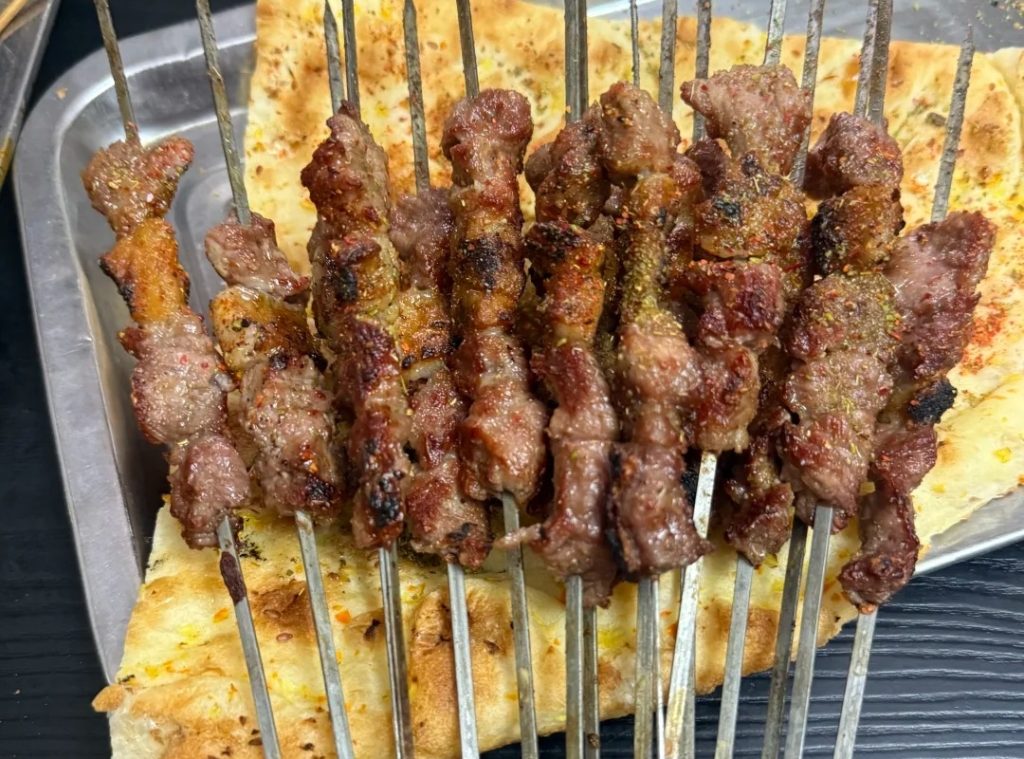
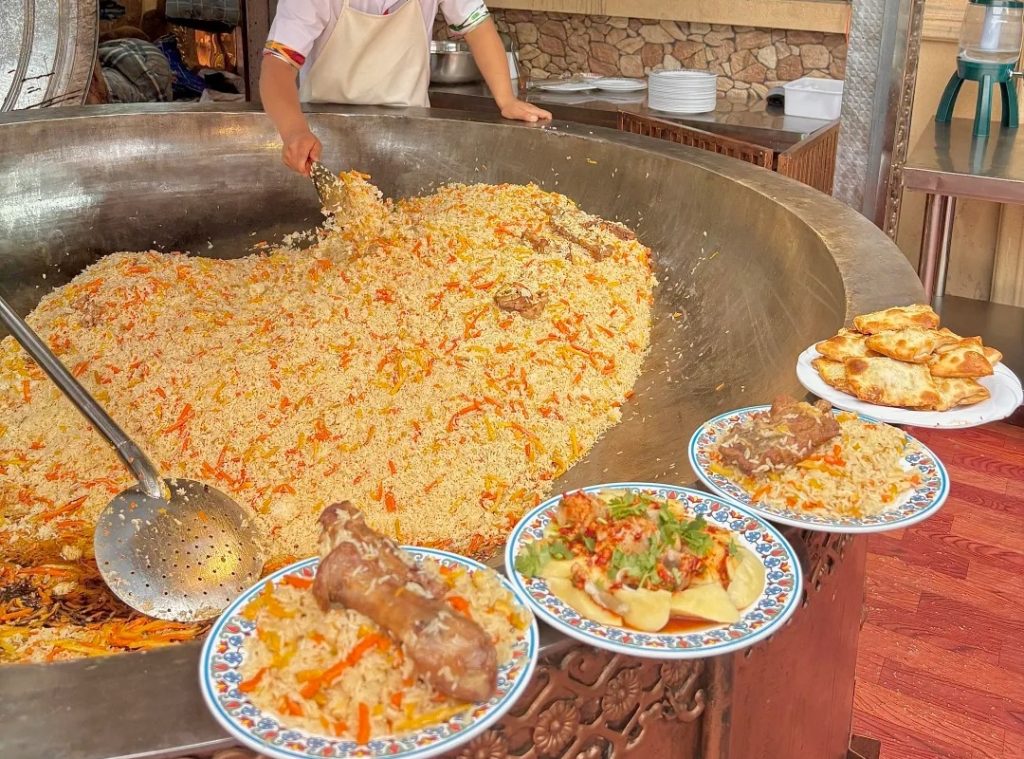
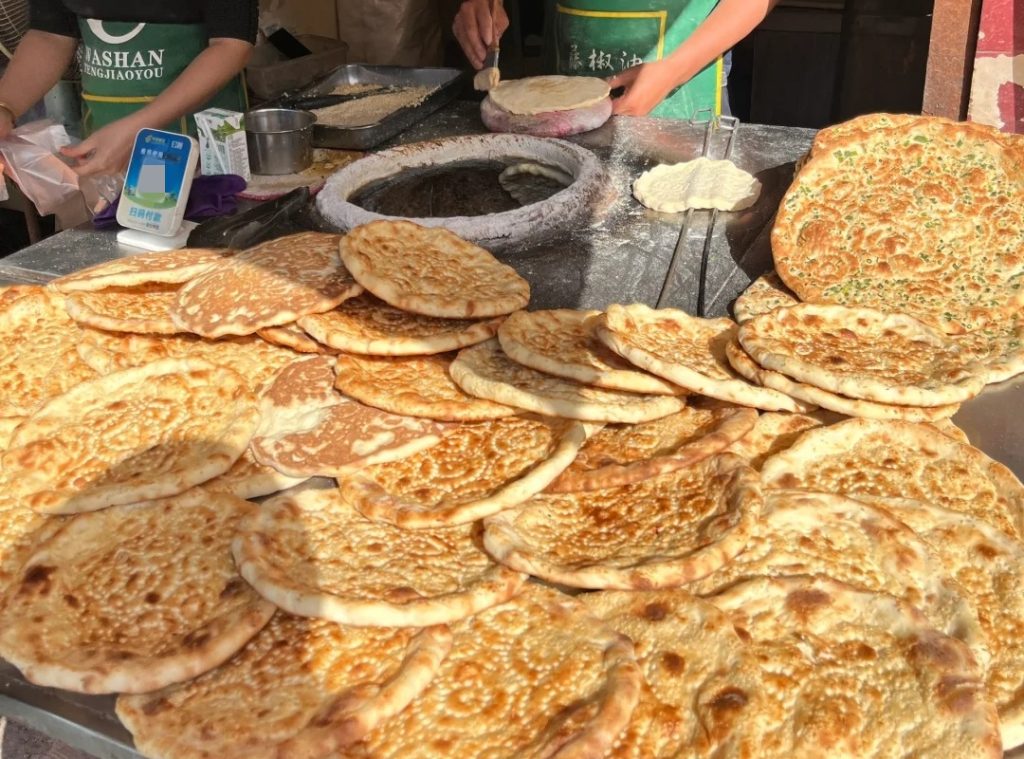
Nearby Attractions: Jiaohe Ruins on Silk Road
Visit the Jiaohe Ruins on Silk Road and explore nearby Flaming Mountains for fiery sunsets, and Karez Wells for ancient underground water channels—two must-sees that bring Xinjiang’s history and landscapes to life.
1. Flaming Mountains: Fire & Sunset Magic
- Distance: 4–6 km
- Features: A UNESCO-listed underground irrigation system dating back 2,000 years. At Karez Paradise, walk through cool tunnels and learn how ancient communities channeled glacial water to farm in the desert. Pair with Karez Cultural Park (6 km away) for interactive exhibits .
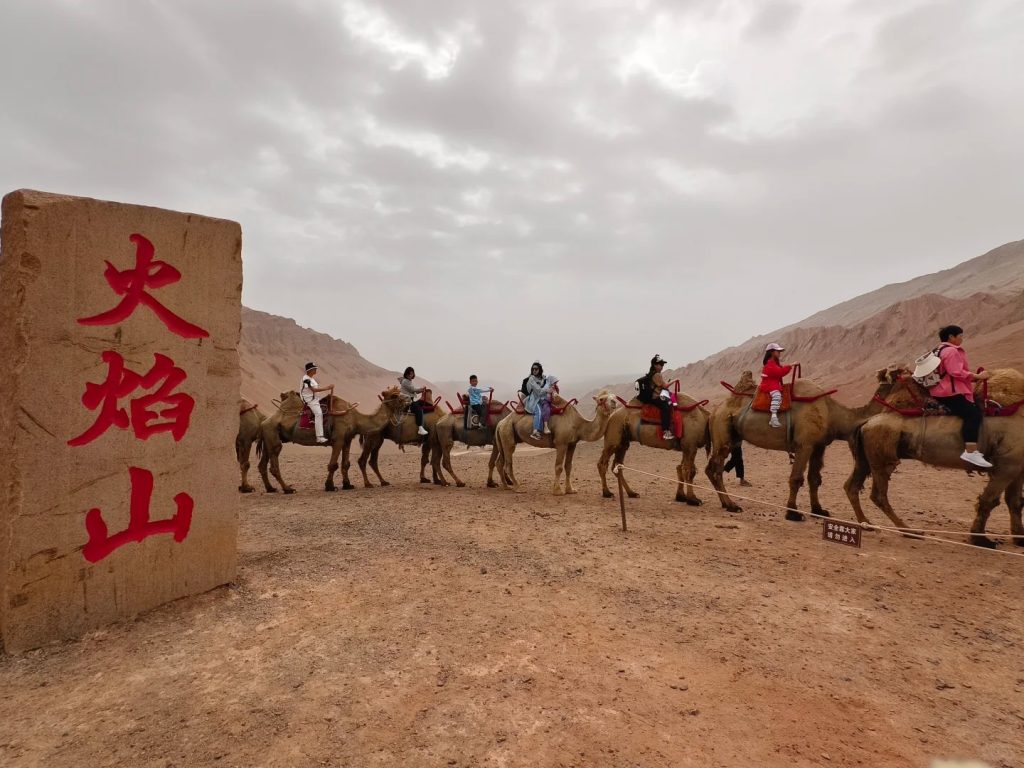

2. Karez Wells: Underground Water Miracle
- Distance: 10 km
- Features: Striking red sandstone mountains famed for summer temperatures exceeding 50°C (122°F). Linked to the Journey to the West legend, viewpoints and camel rides are available. Newly upgraded facilities include an underground train, the “Dragon Spring,” and nearby Karez Wells, an ancient irrigation system.
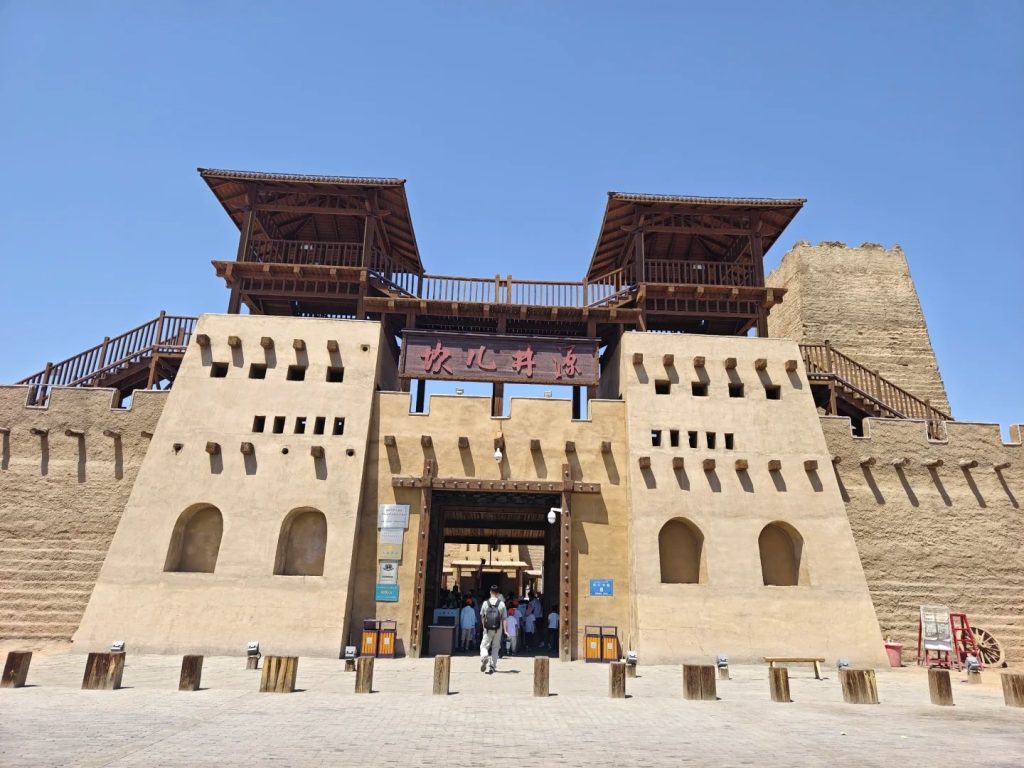
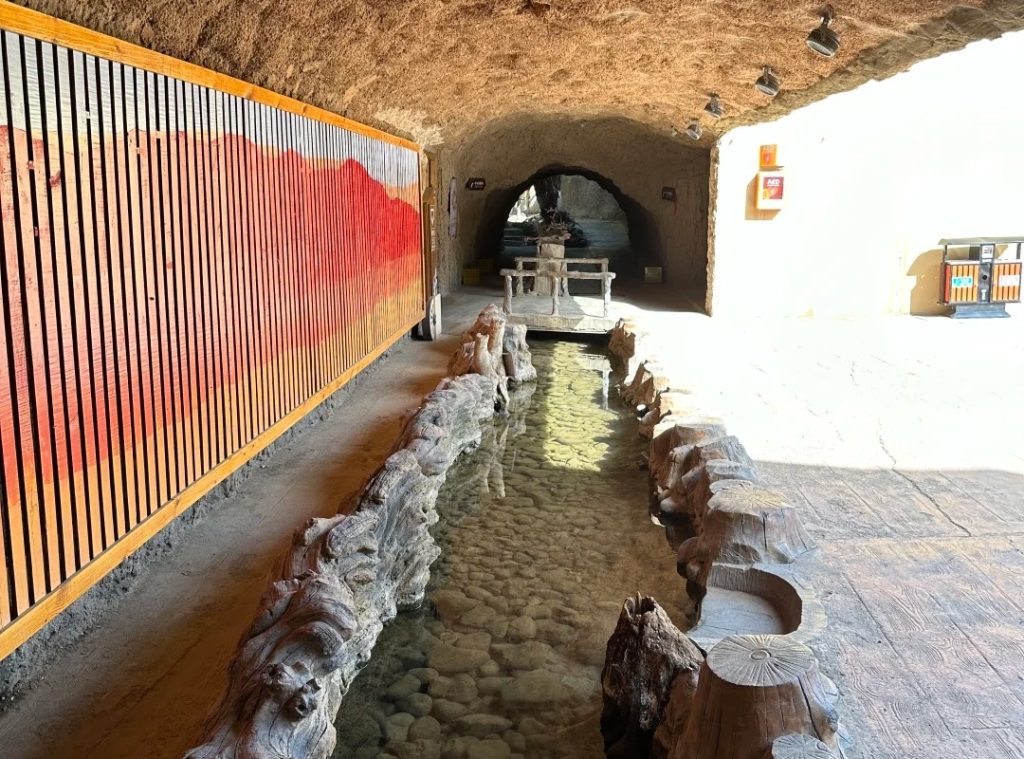
Practical Tips for Your Trip to Jiaohe Ruins on Silk Road
Here are some practical tips and useful advice I’ve gathered for visiting the Jiaohe Ruins on Silk Road, Xinjiang, to help you make the most of your trip.
1.Best Time to Visit Jiaohe Ruins on Silk Road:
Spring (April–May) and autumn (September–October) are perfect. Temperatures stay 15–25°C, with clear skies—great for walking.
2.Getting to Jiaohe Ruins from Downtown Turpan on the Silk Road:
Jiaohe Ruins sit 10–13 km west of downtown Turpan. Turpan is a small city, so the trip takes only about 20–30 minutes.
3.Protect the Ruins:
Don’t climb the walls or carve on stones. Stay on the wooden paths—this way, the ruins will stay intact for future visitors.
4.Night Tour Experience:
Don’t miss the night visit (20:00–22:00). Lights highlight the ruins’ outlines, and the live concert makes the whole place feel magical. It’s a totally different vibe from daytime!
5.Photography Tips:
- Sunrise/Sunset: The light at sunrise (around 7:00) and sunset (around 19:00) makes the earthen walls glow—perfect for photos of the main street and temple area.
- Central Square: Stand in the middle of jiaohe complex at golden hour to capture the vastness of the ancient civilization market.
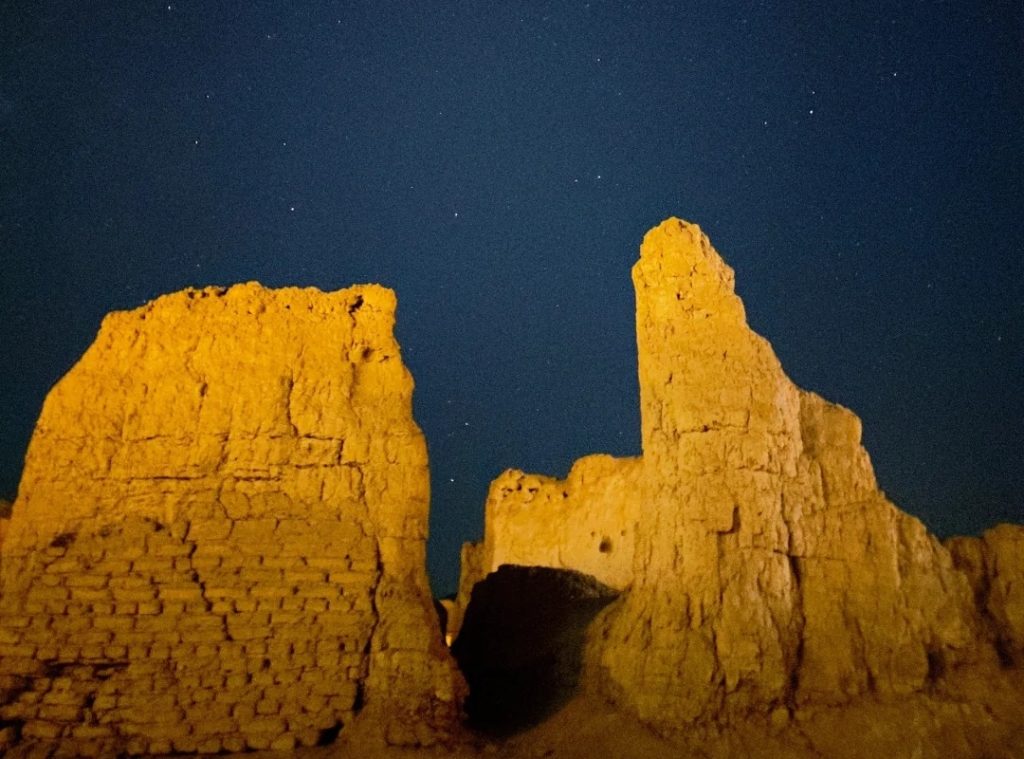
Jiaohe on the Silk Road was a vital trading hub where merchants from China, Persia, and India exchanged goods, while monks like Xuanzang spread religious teachings. Its sturdy defensive walls reveal a city designed with careful cooperation and military strategy. Today, the Jiaohe Ruins stand as a vivid reminder of this ancient crossroads, allowing visitors to step back in time and connect with the lives of those who once thrived on the Silk Road centuries ago.